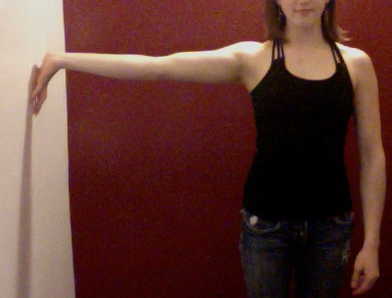I recommend the olympic style front squat:

The front squat is the king of exercises for the thoracic spine. It will give you perfect posture, and will get you strengthening and extending your upper back like nothing else.
To perform this exercise, it means getting the flexibility in your lats to keep your elbows up during the lift. Notice how her elbows never dip. You will also need to get the flexibility in your hips to keep your chest up and hit rock bottom with the squat. It's very challenging, and you'll notice very quickly that it will fix your kyphosis.
Note: Do not use a cross-over grip in this case! This requires much less mobility:

It's fine to use cross-over grip if you aren't performing this exercise with mobility in mind, but you are.
Stretches
The first time I did a front squat, it took me about a week of stretching for quite some time everyday before I had the mobility.
To stretch for this exercise, you'll want to start with your lats:

Also stretch your wrists, biceps, and pecs with this incredibly effective stretch:

*Note: Really push into your hand and turn your body away. You should feel a huge stretch in your arm and bicep.
If you're having trouble hitting depth with the squat (you should be able to touch your butt to your ankles), this is a good stretch:

*Note: You should use your elbows to push your knees as far out as possible in this position as well. Spend a lot of time in this position, working into your ankles from various positions (keep heels on the ground), pushing around into your hips, extending your butt up into the air and approaching the stretch again, and also thinking about lifting your chest and pushing your head back. You will feel a huge stretch in your thoracic spine. Play around with this stretch. Get comfortable down there. It will contribute significantly to a solid squat.
Frequency
After you're able to do a front squat, find out how much weight you can do for 8-12 reps. I'd do at least five sets of front squats at least twice a week. If possible add 5-10 lbs onto the barbell every week.
If you find your elbows dropping or any jerkiness to the movement, reset with lighter weight.
*Note about the links you provided above: These stretches and exercises definitely won't hurt to do. As you know, (most commonly) movement and position dysfunctions such as kyphosis/hyperlordosis are generally the result of weaknesses of the musculoskeletal system. Nothing strengthens muscle better than weight training. Put some weight on your body and you'll make some leaps and bounds.
Also, you may wish to see my post on correcting forward head posture.




